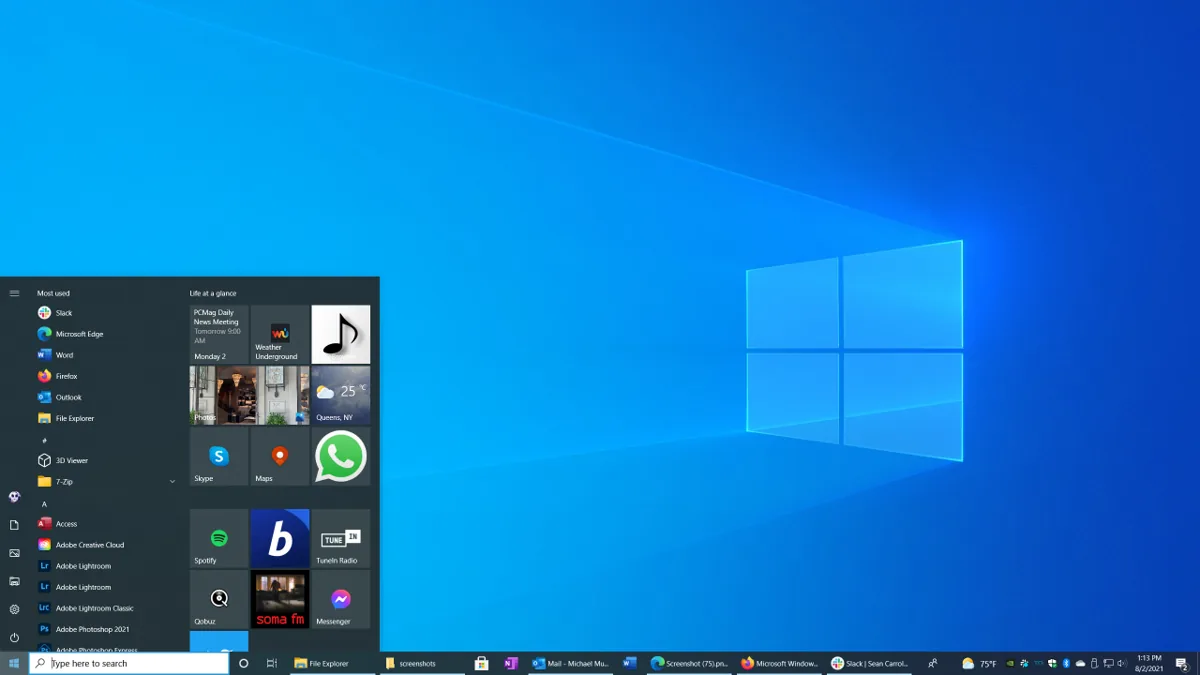How To Fix Windows Not Using All Available RAM
RAM is one of the essential components of computer systems, and any defect or deficiency in RAM slows down the system’s performance. Many software and hardware problems can prevent the full use of RAM and reduce the system’s potential to handle various processes and programs. Some Windows users, especially Windows 7 and 10, face these problems.
To solve the problem of not entirely using RAM, you must first find the source of this problem and then implement the appropriate solution. Upgrading to 64-bit Windows, updating BIOS, and turning off some memory-related features are among the most widely used solutions.
So, don’t be surprised if you notice this after checking the Task Manager. Many reasons can prevent the full use of RAM; for example, the use of 32-bit Windows, internal GPU, old BIOS, and defective RAM are the most critical factors that can cause such a problem. But there is no need to worry because each has its own solutions, and we try to cover all the practical solutions for the full use of RAM in this article.
Of course, this problem is not only for desktop Windows, but Windows servers can also face such a problem that if using a Windows virtual server, incorrect configuration of the virtualizer and unstable management of resources can cause such issues.
You must make an intelligent choice to feel comfortable about the performance of virtual machines and resource management of virtual servers and not face problems when using essential resources such as RAM. A choice that does not meet you with such limitations and provides the necessary ground for your growth and development. Suppose you want to own a powerful Windows virtual server and put aside concerns about the power and performance of essential resources such as processor and RAM. In that case, we recommend that you visit our Windows virtual server purchase page and choose the most suitable option for you among the beautiful plans we have prepared for you.
It’s time to get to know the reasons why the system does not use the entire RAM and practical solutions to solve it:
Table of Contents
- Reasons for not entirely using RAM in Windows
- Method 1. Use a 64-bit Windows.
- Method 2. Turn off the automatic RAM virtualization feature.
- Method 3. Change BIOS settings.
- Method 4. Restore your BIOS.
- Method 5. Update the system BIOS.
- Method 6. Turn off the Maximum memory feature.
- Method 7. Check the system graphics type.
- Method 8. Update Windows.
Reasons for not entirely using RAM in Windows
Before examining the reasons for this problem, it is better to mention usable RAM.
When you buy a laptop with 8 GB memory, not all this memory is available. The Windows operating system occupies a part of this memory, BIOS, and system processes, and tasks related to resource management, system status management, and system operations are performed in this section. This part of RAM is called “system” or “operating system” memory.
Another part of memory, known as usable memory, is dedicated to programs and processes related to running applications. When you are facing the problem of not using total RAM, this part of RAM is in trouble, and it is your system’s right to use all the usable memory you can’t. But what is the reason for this?
Many reasons can prevent the full use of RAM; the following are the most important ones:
32-bit Windows bit version
The Windows operating system comes in 32- and 64-bit versions. 32-bit versions are limited in terms of RAM usage. In such a way that they only support 4 GB of physical RAM. This problem arises from the memory addressing limitations and how addressing bits are handled. So, suppose your system’s RAM is more than 4 GB, apart from the 4 GB of memory allocated for the operating system, graphics memory, and other running programs. In that case, the remaining RAM is not recognized by the operating system and can be used. It is not used.
Automatic virtualization of RAM is on
The RAM virtualization feature creates a particular area on the hard disk for use under the file paging format. Although the automatic RAM virtualization feature plays a vital role in the optimal implementation of virtual machines such as VMware, the activation of this feature prevents the full use of Windows RAM.
Defective or incompatible RAM
Defective and incompatible RAM is one of the most important reasons that can lead to the lack of total RAM efficiency in the Windows system. If your system’s RAM is not functioning correctly, the performance and stability of the system will decrease to a great extent. In addition to seeing system messages and errors, you will have difficulty diagnosing problems related to running programs and applications.
Outdated or misconfigured BIOS
BIOS is the first software to operate when starting the computer system for essential hardware management. Suppose this software is not up-to-date or its settings are not configured correctly. In that case, the necessary grounds for problems, such as incorrect allocation of memory resources, are provided, reducing the system’s efficiency and performance.
Use integrated GPU
If you have an integrated GPU, you won’t be able to use all of your RAM unless you upgrade it to a dedicated graphics card because an integrated GPU will use up your RAM and leave you with the rest of the RAM, which may be used for You are not enough.
Of course, other reasons can cause you to face this problem. We recommend running the following methods to find a solution to utilize Windows RAM fully.
Method 1. Use a 64-bit Windows.
To find out how many bits your Windows is, you can use the tutorial on detecting the bit version of Windows. If your Windows is 32-bit, you should consider installing 64-bit Windows if your system processor is also 64-bit and compatible with this version of Windows. So, if you encounter such a scene when checking your version of Windows from the system section of the settings, it is time to migrate to a 64-bit Windows.
For that, it is enough that:
1. Make sure the processor is compatible with 64-bit Windows.
2. Make a backup of all your system’s essential data and files because, during the upgrade process, all these files will be deleted.
3. Start the 64-bit Windows installation.
There are different ways to install Windows; choose the correct version and follow the installation steps.
If, after upgrading your Windows, you find that your system still cannot use all of its RAM, keep calm and follow the next steps.
Method 2. Turn off the automatic RAM virtualization feature.
Using this feature, you can consider Windows a part of the hard disk as RAM. The activation of this feature can cause the problem of not entirely utilizing the system’s RAM itself because if Windows has more RAM due to the activation of this feature, the possibility of not being able to use the RAM of the procedure fully increases.
To turn it off, you can follow the steps below:
Click the Win + R combination button, type advanced, and select View advanced system settings from the results.
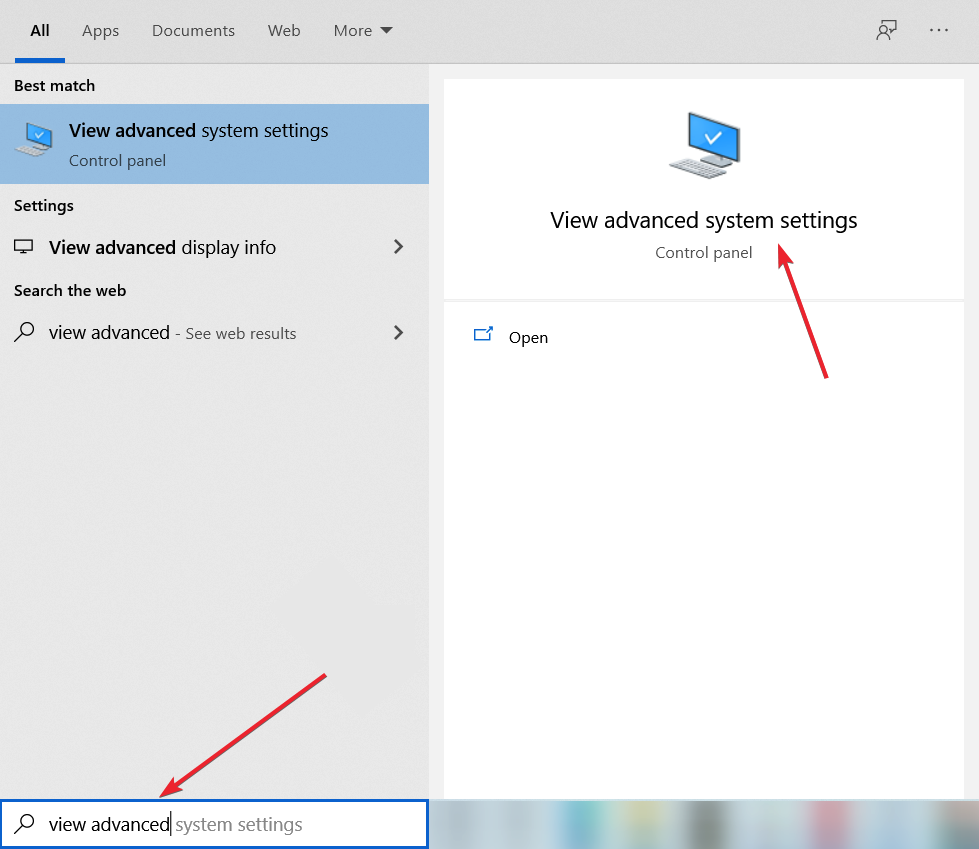
Click on the Settings button.
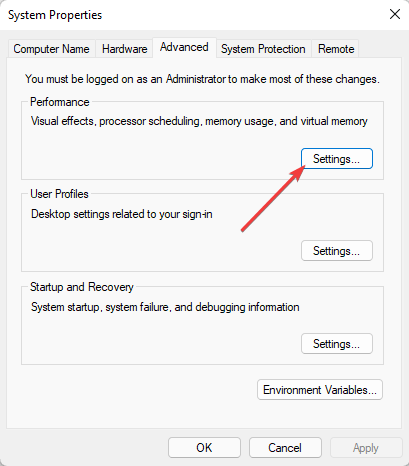
After the Performance Options window opens, go to the Advanced tab and click Change.

Uncheck the Automatically manage paging file option.
Select the drives in the bottom list one by one and check the No paging file option for them.
After applying these changes, click on OK and restart your system.
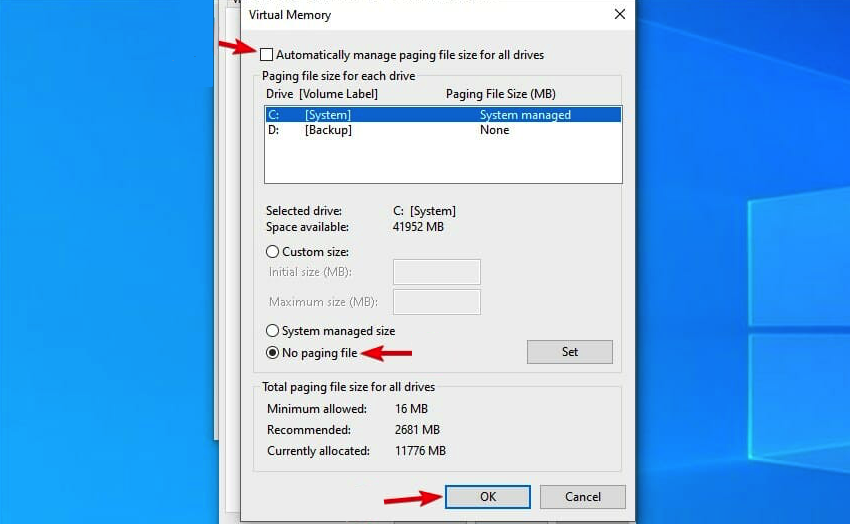
Check if the problem of not using total RAM is solved or not. If the problem is not caused by the feature being enabled, you can repeat the above steps and re-enable the feature.
Method 3. Change BIOS settings.
Incorrect configuration of BIOS settings can also be a reason for not using the total amount of RAM. To change BIOS configurations, follow these steps:
Restart your system, and before Windows, press one of the F2 or Del keys according to your device type to open the BIOS menu.
Set the attribute values as follows:
Virtualization – ON
iGPU – OFF
Render Stability – Enabled
GPU memory – Auto
Multimonitor – Disabled
Frame Buffer Location – Below 4G
After you set these values, it’s time to set Memory Remap.
Go to the Advanced tab and click on “System Agent Configuration.” Click on system agent config.
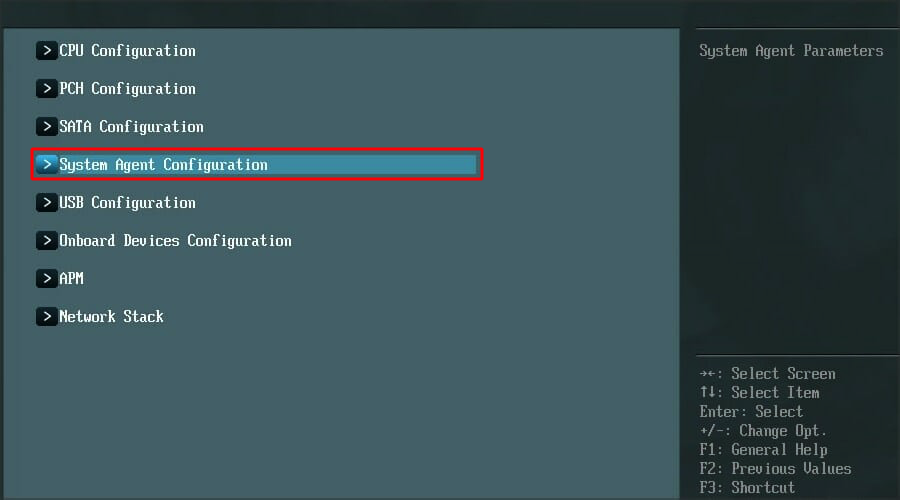
Click on “Memory Ramp” and set it to “Enabled”.

Then look for the iGPU, Internal Graphics, or Onboard Graphics feature and put it in Disabled mode.
In addition, change the AGP video aperture size according to your RAM size. The ideal length is between 64 and 128 MB, and the system cannot use the memory allocated to this section. Changing the memory size for this section will slightly affect the system’s usable memory, but it’s worth a try.
After the steps, click F10 to save the changes.
Method 4. Restore your BIOS.
If you find that these changes did not solve the problem, you can reset the BIOS settings to their original state and see if it makes full use of the RAM or not:
Open the BIOS and go to the “Load Default Options” section in the EXIT tab.
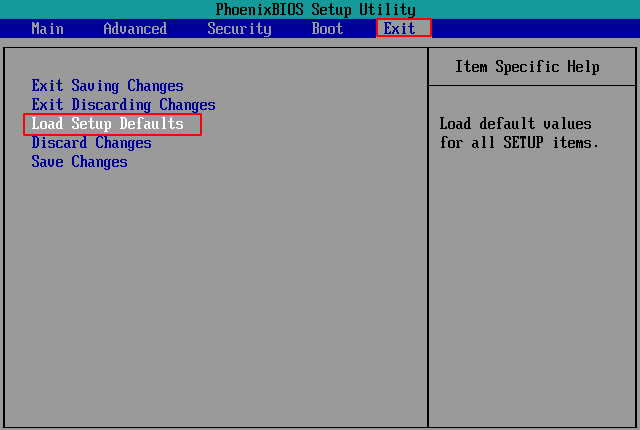
Close the “Load Default Options” pop-up by clicking Yes to reset the BIOS settings.
Method 5. Update the system BIOS.
Sometimes, the old BIOS can be the reason for the problem of not entirely using the RAM, for which updating the BIOS can be a good solution. To do this, follow the steps below:
Press Win + R, type msinfo32, and hit enter to bring up System Information.
Find the BIOS Version/Date and note the manufacturer and BIOS version.

Go to the manufacturer’s site, click on BIOS, and download the recommended update from the list of drivers provided for the system.
* While updating the BIOS, keep the system on and, as a precaution, connect the charger to the power so that the system’s charge does not stop the process.
Double-click on the Excel file you downloaded to run it.
During the update, the system will restart, and you will see a black screen for a short time, so don’t worry. Wait until the update is complete.
Method 6. Turn off the Maximum memory feature.
Activating the Maximum memory feature makes the system BIOS use only a certain amount of RAM during startup. The value you enter in this field is a limit for the amount of usable RAM of the Windows system. So, by removing the tick of this option, you can solve this problem:
Right-click on Start and select Run.
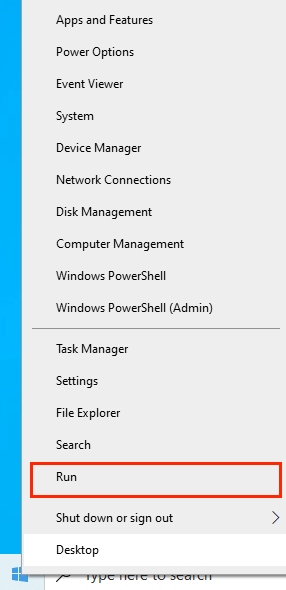
Type MSConfig and press Enter.

Go to the Boot tab and click on Advanced options.

Uncheck the Maximum memory option and click OK.
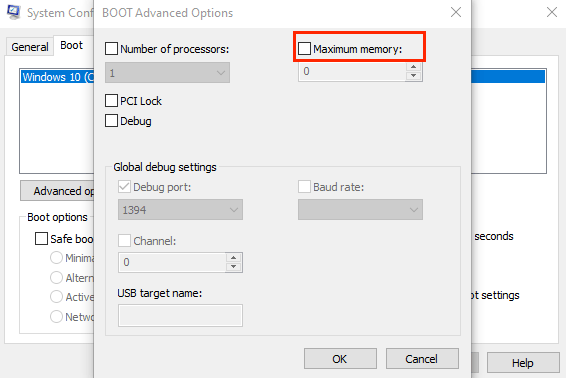
Restart your system and check whether the problem of not using the entire RAM is solved.
Method 7. Check the system graphics type
If your system has an integrated graphics card, a part of the RAM is automatically allocated to this graphics card. To check the graphics type of your system, you can go through the following steps:
Right-click on Start and select “Device Manager.”
Click on the arrow next to Display Adapters to open the corresponding list.
Find the graphics card from the list and write down its name.
Look up the graphics card’s name on the internet and see if it is integrated or proprietary.
If your graphics are integrated, the solution to fully utilize the RAM is to buy a dedicated GPU and use it to upgrade your system’s graphics.
Dedicated or discrete graphics have separate RAM and do not share CPU RAM. These graphics have higher energy consumption in exchange for faster and better performance.
Method 8. Update Windows.
Windows updates can also be a solution to fully use RAM because some old versions face problems such as excessive RAM usage or leakage. There are many ways to update Windows, the easiest of which is as follows:
Click Start and search for Windows Update Settings.
After the Windows Update window opens, select Check for Updates and wait for new updates to be detected.
If there is a new update, follow the instructions to install it.
If you are not receiving new updates due to using old Windows, such as Windows 7, which has lost Microsoft support, and you are facing the problem of not entirely using RAM, maybe it is time to migrate to newer versions, such as Windows 10. and in this way, get help from the educational article on updating Windows 7 to Windows 10. If you have problems while installing Windows 10, the report on solving the problem of installing Windows 10 can be your solution.
Windows 10 and 11 are among the best options that, due to the security and technical support of Microsoft, have the potential to save you from problems such as not entirely using RAM, provided that your system meets the necessary hardware requirements for Hosted by Windows.
Method 9. Check for RAM failures.
If you still don’t get the desired result after implementing the above methods, it’s time to take action regarding hardware. The existence of any defects and failures in the RAM itself can cause the problem of not entirely using the RAM.
* Because opening the laptop and manipulating the RAM is a susceptible task, getting help from a hardware expert is better.
Before doing anything, it is better to check the status of the RAM using the internal memory diagnostic tool:
To check RAM failures, turn off the computer and disconnect all cables.
Then, open the laptop, remove the RAM from the system, cle, and all its slots and pins, and reinstall it in its partition.
After that, turn on the system and check the system RAM status using the steps above:
Press Win + R, type resmon, and hit enter.
Go to the Memory tab and check the RAM status.
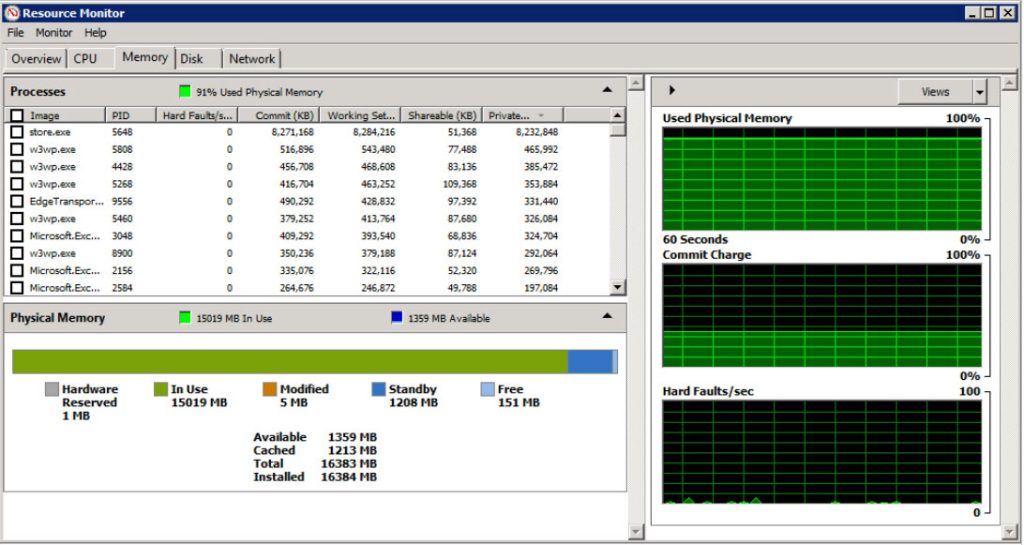
If the problem is not resolved, you should test the RAM sticks and slots individually to finally discover the faulty part and take the necessary steps to repair or replace it.
The weakness of RAM modules, incorrect arrangement of RAM, etc., are other problems involving physical RAM.
Conclusion
Many reasons can cause Windows system RAM not to be fully utilized. The solutions we reviewed in this article are each chosen to solve specific problems. Try to do the necessary things to save your RAM because if this part of the hardware is in a bottleneck, your entire system will be limited.
Thank you for staying with us until the end of the article. We hope that reading this article was helpful for you. If you have any questions or requests and need guidance, you can contact us by registering your opinion so we can answer you as soon as possible.
